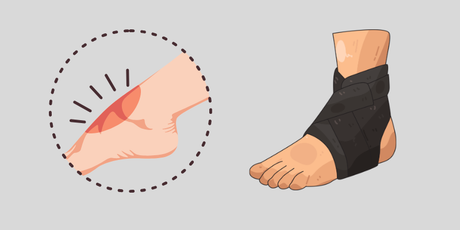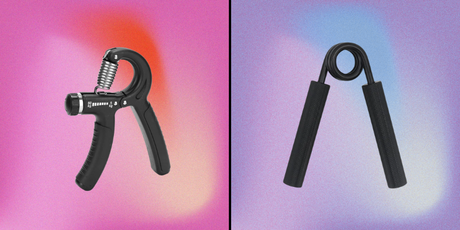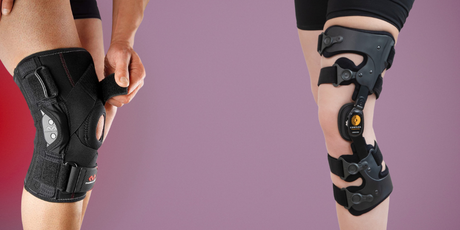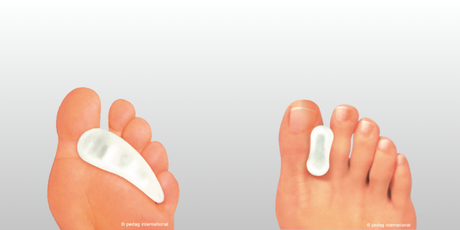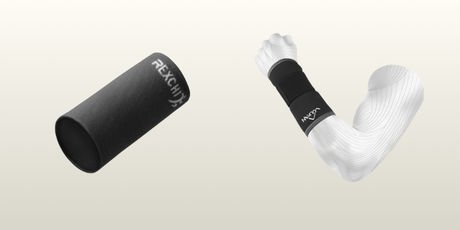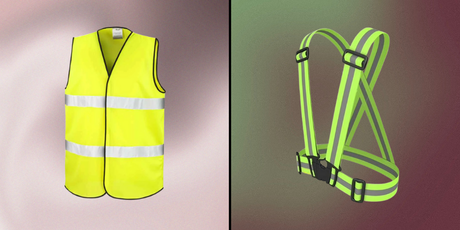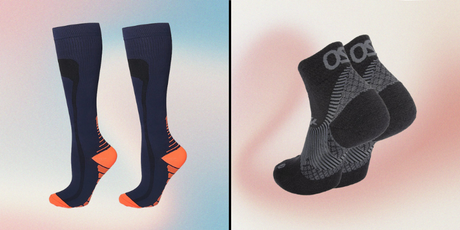Wrist injuries are surprisingly common because of how complex and frequently used our wrist joints are. In fact, these seemingly minor injuries can make everyday tasks unexpectedly difficult, and sometimes even impossible.
We've found that the right wrist support can make all the difference. Wrist braces protect, stabilise, and support your wrist in a neutral position, which helps limit movement. Additionally, they alleviate pain, inflammation, and stiffness due to conditions such as arthritis or tendonitis. Whether you're looking for a wrist brace for sprain recovery, a wrist band for pain relief, or the best wrist support for arthritis, the good news is that quality options are quite affordable - and we have curated a large collection of them.
However, with so many options available, choosing the right support can feel overwhelming. That's why we've created this straightforward guide to help you find the perfect wrist brace for your specific needs. From understanding common wrist conditions to comparing different types of supports, we'll walk you through everything you need to know to make an informed decision.
If you're looking to give your wrist some relief, check out our collection of wrist braces and wrist supports.
Know Your Wrist: Anatomy and Common Conditions
Understanding your wrist's structure is essential for selecting the right support. The wrist is a complex joint connecting your forearm to your hand, enabling daily activities through its remarkable mobility.
How the wrist works
The wrist is a condyloid synovial joint that allows movement in multiple directions. This joint forms where the radius bone and articular disc meet the scaphoid, lunate, and triquetrum carpal bones. Unlike what many assume, the ulna doesn't directly participate in the wrist joint.
Four key ligaments maintain wrist stability: the palmar and dorsal radiocarpal ligaments plus the ulnar and radial collateral ligaments. These structures work together with numerous muscles to enable four primary movements:
- Flexion: Bending your wrist downward (toward your palm)
- Extension: Moving your wrist upward
- Adduction: Bending your wrist inward
- Abduction: Bending your wrist outward
What causes wrist pain
Wrist pain typically stems from injuries or underlying health conditions. Common injuries include:
- Overuse and repetitive strain
- Sprains
- Sports injuries
- Falls
- Bone fractures
- Nerve injuries
Furthermore, certain health conditions often lead to wrist discomfort. These include carpal tunnel syndrome, tendonitis, arthritis, bursitis, and ganglion cysts. Wrist pain may appear suddenly after injury or gradually develop over time with chronic conditions.
Conditions that benefit from support
Many wrist conditions improve significantly with proper support. Compression wrist supports and braces particularly help with:
- Sprains and strains: A sprained wrist brace stabilises the joint during healing
- Carpal tunnel syndrome: Wrist supports reduce symptoms by limiting movement that aggravates the compressed median nerve
- Arthritis: The best wrist support for arthritis provides pain relief and stability
- Tendonitis: Wrist bands for pain relief restrict movement, allowing inflamed tendons to heal
Choosing the right support depends on your specific condition. For instance, those with hypermobility need different support than someone recovering from a sprain. Quality wrist supports deliver several benefits: pain relief, injury prevention, improved functionality, and the ability to continue daily activities with greater comfort.
Different Types of Wrist Braces Explained
Wrist braces come in various designs, each offering different levels of support and serving specific purposes. Selecting the appropriate type depends on your condition and the level of mobility needed for daily activities.
Splints, wraps, and compression bands
Wrist splints are designed to immobilise the joint by incorporating rigid components - typically made from hard plastic or lightweight metal - that run from the forearm to the palm. Essentially, they function as a "half cast," preventing potentially harmful movements while unloading pressure on nerves and bones.
Wraps, meanwhile, are simpler supports that encircle the wrist. Despite their basic design, they're remarkably effective because you can easily adjust the level of compression. These are commonly used during sports activities to provide stability during lifting or pressing movements.
Compression bands and sleeves apply steady pressure to prevent fluid buildup and swelling. Generally made from neoprene or elastic polyester, these supports retain body heat, consequently increasing blood flow and encouraging healing.
Sprained wrist brace vs arthritis support
For sprains, a brace with firmer support is ideal. These typically feature adjustable straps and properly positioned splints to stabilise the joint while allowing some mobility. The primary goal is to limit movement that might worsen the injury.
Arthritis supports, conversely, focus on providing warmth and gentle compression. Products like the Actimove Arthritis Care Wrist Support deliver light compression and soothing warmth specifically to help manage arthritis pain. These supports are often designed for longer-term wear.
Take a look at our collection of wrist braces for sprains and arthritis support.
Thumb support vs full wrist brace
Thumb supports specifically target the carpometacarpal (CMC) and metacarpophalangeal joints. They're particularly useful when you experience pain mainly in the thumb area, notably when gripping objects becomes difficult. Quality thumb braces immobilise the thumb while allowing the rest of the hand to function normally.
Full wrist braces, alternatively, stabilise the entire wrist joint. The main supportive casing maintains the wrist in a neutral position, whereas adjustable straps ensure the brace stays securely in place. These comprehensive supports are ideal when pain affects the broader wrist area.
We also have a collection of finger splints and other braces.
Matching the Brace to Your Needs
Selecting the appropriate wrist support depends largely on your specific condition and daily activities. The right brace can make a substantial difference in your recovery and comfort level.
Choosing based on condition: arthritis, sprain, tendonitis
For arthritis sufferers, look for supports that provide warmth and gentle compression to relieve joint pain. Braces specifically designed for arthritis, such as those with "arthritis care" labels, deliver soothing warmth to affected joints.
If you're dealing with a sprain, prioritise stability. An all-purpose wrist brace with a metal "stay" or "spine" on the palm side will support your wrist in the neutral position. For optimal recovery, wear this type of splint only as needed to minimise painful movements until symptoms subside.
Tendonitis requires supports that reduce strain on irritated tendons. Wrist tendonitis often results from overuse, causing pain in the front of the wrist when grasping objects. A support with a removable aluminium palmar bar that can be shaped to your wrist is ideal, as it prevents unwanted movement while allowing finger dexterity.
Best wrist support for typing or sports
For computer users, ergonomic wrist rests help maintain a neutral position during typing. These supports alleviate pressure on the median nerve and tendons, preventing conditions like repetitive strain injury (RSI). Importantly, they enhance overall comfort during long work sessions by allowing you to relax your arms more while typing.
Sports enthusiasts need flexible yet supportive options. The best sports wrist supports limit bending and stretching of the wrist while leaving the palm free for normal gripping. For activities involving repetitive wrist motion, choose supports without metal bars that provide good support without restricting movement.
Wrist band for pain relief during daily tasks
For everyday activities, lightweight elastic wrist supports offer adequate protection without limiting mobility. These supports are perfect for:
- Light household chores requiring wrist flexibility
- Shopping and carrying bags
- Gardening activities
- Driving for extended periods
Remember that properly fitted supports are crucial—incorrectly sized wrist braces could be harmful. Most manufacturers provide sizing guides based on wrist circumference, ensuring you select the appropriate size for maximum benefit.
Tips for Safe and Effective Use
Proper usage of your wrist support is equally important as selecting the right type. Following these guidelines ensures maximum benefit without causing harm.
How long to wear a wrist brace
Wearing duration varies by condition. For fractures, wear the brace continuously except when bathing. Alternatively, for soft tissue injuries, remove it at night. Some people might need to wear support nearly all the time, whereas others only during activities that stress the wrist. Your wrist support should ideally be worn for two to six weeks to enable comfortable arm use while the injury heals.
Avoiding overuse and muscle weakening
Long-term use can cause muscle weakening. Accordingly, it's advisable to remove the brace periodically to gently exercise your wrist and maintain muscle strength. After a period of splint use, gradually increase hand and wrist movements to prevent muscle deterioration.
When to consult a doctor
Seek medical attention promptly if:
- Pain persists after 7-10 days of home care
- You notice warmth, redness, or tenderness (signs of infection)
- You have severe pain or visible deformity
- Your wrist hurts even when resting
- You experience fever over 37.8°C
How to check for proper fit
The best wrist support should feel snug but not restrictive. If your fingers become numb, tingly, or turn bluish, the brace is too tight. Ensure the metal insert runs along the inside of your arm onto your palm. Remember, the brace shouldn't limit finger movements.
Conclusion
Choosing the right wrist support stands as a crucial decision for anyone dealing with wrist pain or recovering from an injury. After all, our wrists play a vital role in almost every daily activity, making proper support essential for both comfort and healing.
The perfect wrist brace depends primarily on your specific condition. Someone with arthritis will benefit most from supports offering gentle warmth and compression, while a person with a sprain needs firmer stabilisation. Similarly, those who type frequently require ergonomic wrist rests, whereas athletes need flexible yet supportive options.
Cost should not be a barrier to finding appropriate support. Our collection of wrist braces are designed to be affordable, making them an accessible solution for most people.
Proper fit and wearing schedule matter just as much as the type of support you choose. The best brace feels snug without restricting blood flow or causing numbness. You should also remember that extended use without breaks can lead to muscle weakening, so periodic removal for gentle exercises helps maintain strength.
Medical advice becomes necessary when pain persists beyond 7-10 days of home treatment or if you notice concerning symptoms like warmth, redness, or severe pain during rest. These signs warrant professional evaluation.
We hope this guide has simplified your search for the right wrist support. The correct brace can make a significant difference in your recovery journey, helping you return to normal activities with minimal discomfort. Your wrists support you through countless tasks every day—therefore, supporting them properly when they need it seems like the least we can do.




